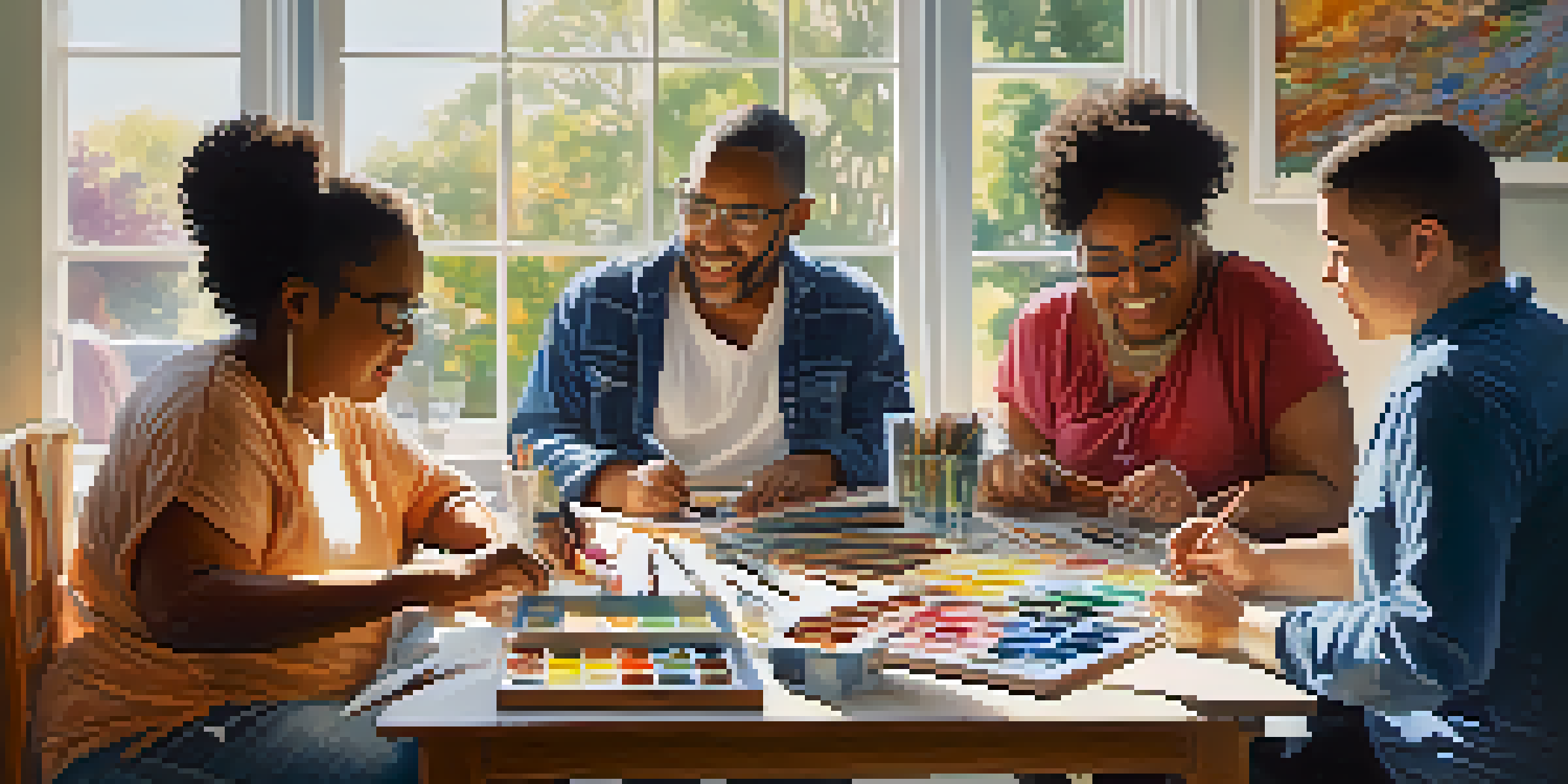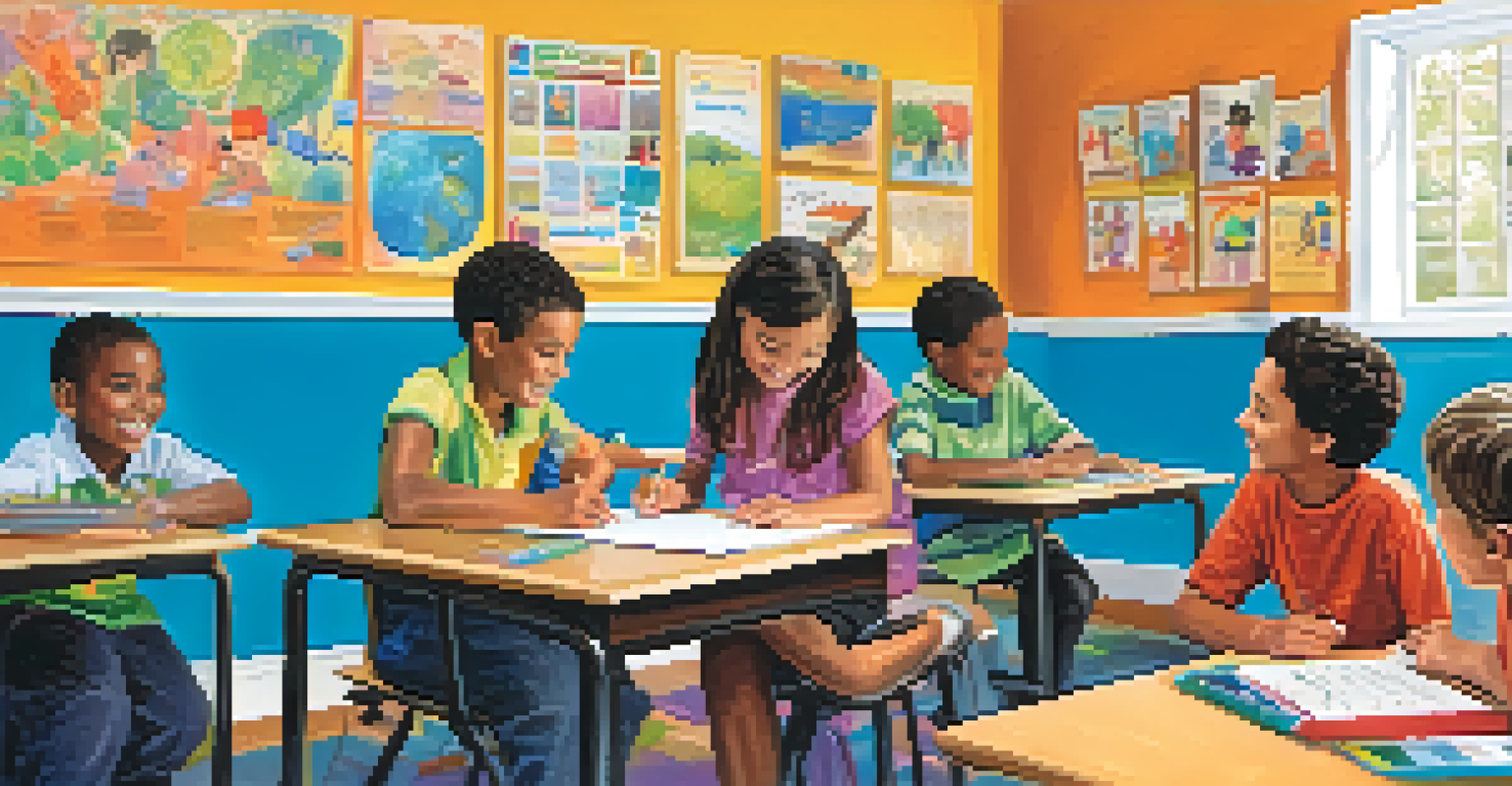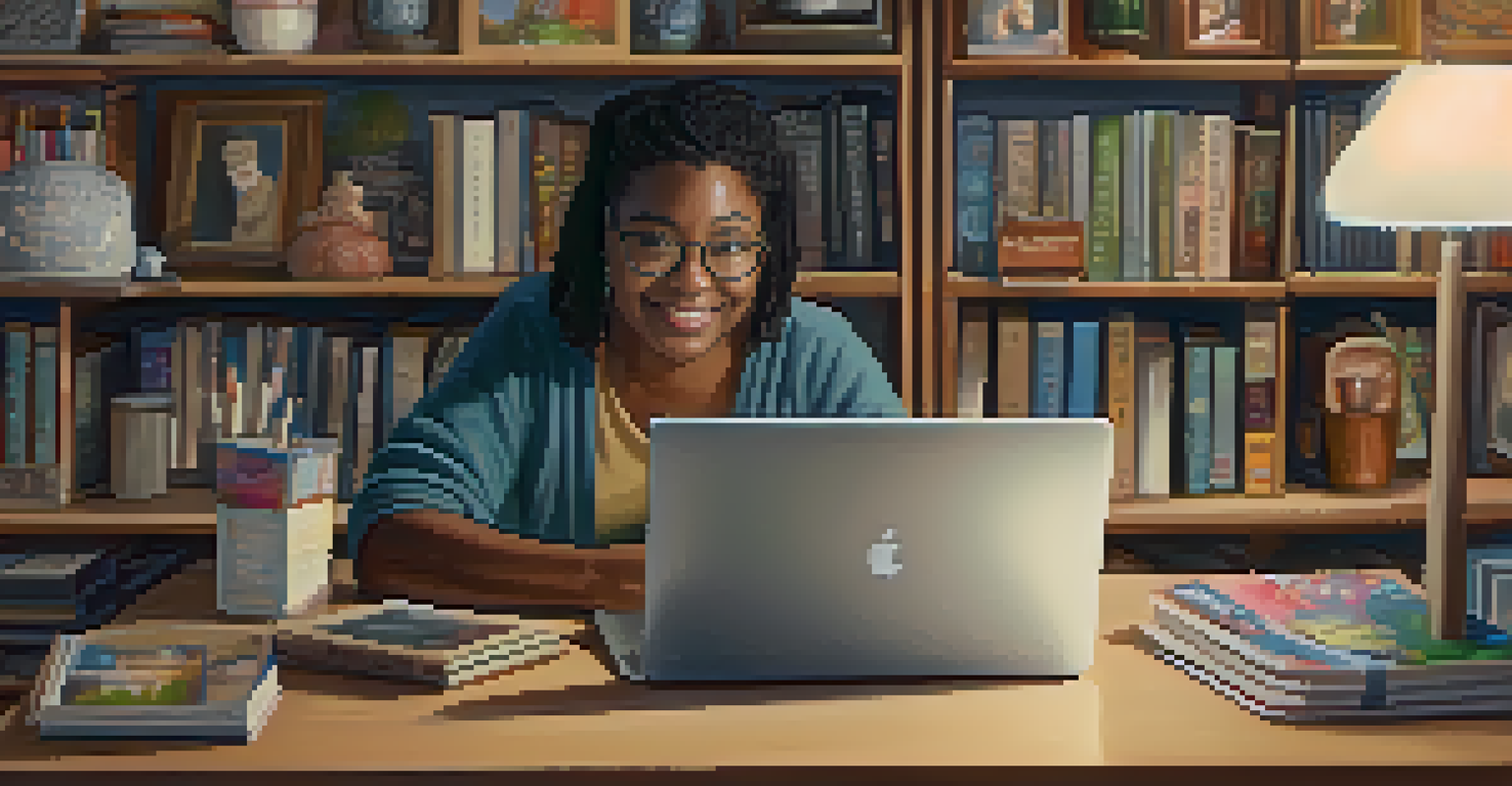Impact of Disability Stereotypes on Public Perception

Defining Disability Stereotypes and Their Origins
Disability stereotypes are oversimplified and often inaccurate beliefs about individuals with disabilities. They can stem from historical misconceptions, media portrayals, or societal norms. For instance, the idea that people with disabilities are helpless or dependent is a common stereotype that has persisted over time.
The greatest disability is not a physical one, but the inability to see the potential in others.
These stereotypes can have deep roots in cultural beliefs, where disability is seen as a negative trait rather than a part of the human experience. This perpetuates a cycle of misunderstanding, making it crucial to examine how these ideas originated. By recognizing the origins, we can begin to challenge and reshape these damaging perceptions.
Understanding disability stereotypes is the first step towards addressing their impact on public perception. It allows us to see how these stereotypes influence the way society interacts with individuals who have disabilities. Ultimately, this awareness can lead to more inclusive attitudes and behaviors.
The Role of Media in Shaping Disability Stereotypes
Media plays a significant role in shaping public perceptions of disability. From movies to advertisements, the portrayal of individuals with disabilities often falls into clichéd roles, reinforcing negative stereotypes. For example, characters with disabilities are frequently depicted as either tragic figures or as heroes overcoming great odds, which can distort public understanding.

When media representation lacks authenticity, it fails to reflect the diverse experiences of people with disabilities. This can lead to a narrow understanding of disability, where society views individuals through a limited lens. The impact is profound, as these portrayals can shape attitudes and expectations in real life.
Stereotypes Shape Disability Views
Disability stereotypes stem from historical misconceptions and media portrayals, influencing societal interactions with individuals who have disabilities.
Moreover, when individuals with disabilities are underrepresented or misrepresented in media, it contributes to a lack of visibility. This absence can lead to further marginalization, as society may not see these individuals as integral members of the community. Thus, media representation is critical in challenging and changing stereotypes.
How Stereotypes Influence Public Attitudes
Stereotypes about disability can significantly influence public attitudes, often leading to discrimination or social exclusion. When society views disability through a stereotypical lens, it can create barriers that prevent meaningful interactions. For instance, people may avoid engaging with individuals who have disabilities, fearing they may say or do something 'wrong'.
Disability is not a characteristic of a person, but a reflection of the society that fails to accommodate their needs.
These misconceptions can also lead to a lack of empathy, as individuals may struggle to see past the stereotype to the person behind it. This results in a society that often overlooks the abilities and contributions of individuals with disabilities. Over time, these negative attitudes can perpetuate a culture of stigma and misunderstanding.
In contrast, when stereotypes are challenged, it opens the door for more positive interactions and relationships. Promoting awareness and education about disability can help shift public attitudes, fostering a more inclusive environment. Ultimately, breaking down these barriers is essential for building a more equitable society.
The Impact of Stereotypes on Employment Opportunities
Disability stereotypes can have significant implications for employment opportunities. Many employers may harbor misconceptions about the capabilities of individuals with disabilities, leading to bias in hiring practices. For example, the stereotype that people with disabilities are less productive can result in qualified candidates being overlooked.
This not only affects individuals seeking employment but also impacts businesses that could benefit from diverse perspectives. By failing to recognize the talents and potential of individuals with disabilities, companies miss out on a wealth of skills and experiences. This creates a missed opportunity for innovation and growth.
Media Misrepresentation Matters
The lack of authentic media representation of individuals with disabilities reinforces negative stereotypes and contributes to their marginalization.
Advocating for inclusive hiring practices and challenging stereotypes is crucial in transforming the workplace. When organizations prioritize diversity and inclusion, it creates a more equitable environment for everyone. This not only supports individuals with disabilities but also enhances the overall organizational culture.
Education's Role in Combating Disability Stereotypes
Education plays a vital role in combating disability stereotypes and fostering understanding. By incorporating disability awareness into curricula, schools can help students develop empathy and respect for diversity. This early exposure can shape attitudes and behaviors that last a lifetime.
Programs that promote inclusion, such as those that encourage interactions between students with and without disabilities, can help dismantle stereotypes. These initiatives create opportunities for shared experiences, promoting a sense of community and understanding. When students learn about disability in a positive context, it fosters acceptance and inclusivity.
Furthermore, educating parents and teachers about disability can equip them with the tools to challenge stereotypes. Providing resources and training can empower educators to create supportive environments for all students. In doing so, education becomes a powerful tool for change.
The Power of Personal Narratives in Changing Perceptions
Personal narratives and stories from individuals with disabilities can significantly impact public perception. When people share their experiences, it humanizes disability and helps to break down stereotypes. For example, a blog post or video featuring someone discussing their daily life can provide insights that challenge common misconceptions.
These narratives have the power to evoke empathy and understanding, allowing audiences to see beyond the label of disability. They remind us that each individual has their own unique story, filled with challenges and triumphs. This shift in perspective can lead to more supportive attitudes and behaviors in society.
Education Fosters Inclusion
Incorporating disability awareness in education helps dismantle stereotypes and promotes empathy and respect for diversity among students.
Moreover, platforms that amplify the voices of individuals with disabilities can create a sense of community. When people share their stories, it fosters connections and encourages dialogue. This can lead to broader societal change as more individuals become advocates for inclusivity and understanding.
Creating a More Inclusive Society: Steps Forward
Creating a more inclusive society requires collective effort to challenge and dismantle disability stereotypes. This can begin with individuals examining their own beliefs and attitudes towards disability. By fostering self-awareness, people can take steps toward more inclusive behaviors in everyday interactions.
Organizations and communities can also play a critical role by implementing inclusive policies and practices. This might include accessibility initiatives, awareness campaigns, and training programs that promote understanding of disability issues. Such efforts can create environments where everyone feels valued and included.

Finally, advocating for policy changes at a systemic level can have a lasting impact. Supporting legislation that promotes disability rights and inclusion ensures that society moves towards equity. Together, these steps can contribute to a culture that embraces diversity and recognizes the worth of every individual.